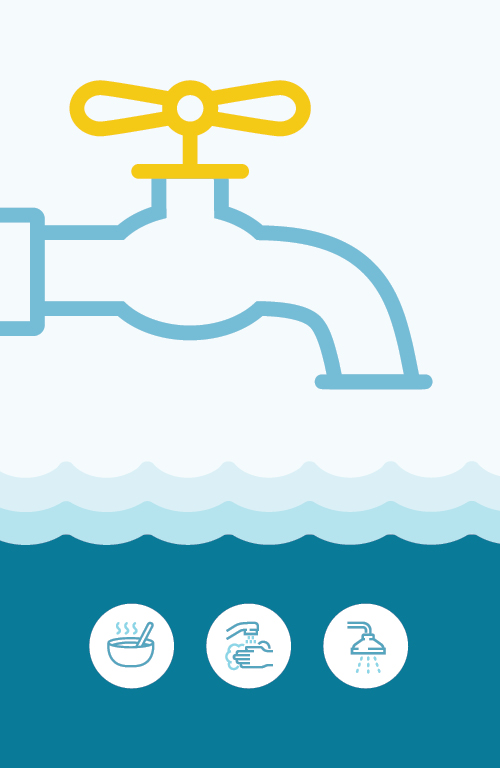Disinfection by-products in drinking water
On this page
What are disinfection by-products
Disinfection by-products (DBPs) are chemicals that form when chlorine is used for disinfecting drinking water to prevent disease. The chlorine reacts with decaying organic matter, like leaves or vegetation, from lakes and rivers to form DBPs. Two of the most common types of DBPs found in chlorinated drinking water are trihalomethanes (THMs) and haloacetic acids (HAAs).
What are the health risks
The use of chlorine to treat drinking water has almost completely eliminated waterborne bacteria and diseases like typhoid fever, cholera, dysentery and other gastrointestinal diseases. Chlorine is the most commonly used drinking water disinfectant. It has been used to disinfect water and make it suitable for drinking for more than 100 years.
Some studies have suggested that long-term exposure to consistent high levels of THMs or HAAs might increase the risk of cancer. Experts agree that any health concern from these DBPs come from exposure over many years.
The benefits of disinfecting drinking water with chlorine are much greater than the potential health risks of being exposed to higher levels of THMs and HAAs.
How are people exposed to DBPs
You can come in contact with THMs and HAAs when drinking or bathing in affected water or breathing in steam when showering or any other activity that generates steam in an enclosed space. Higher levels of THMs and HAAs often happen in summer and fall when there is more organic matter in a community's source water.
How to reduce exposure to high THMs and HAAs levels
If your community's water system has high levels of THM or HAA levels, you can reduce your exposure by:
- opening windows or using a fan when bathing or showering
- taking shorter baths, less than 30 minutes per day or showers, less than 10 minutes per day. Spending only a short time in any activity that generates steam in an enclosed space
- using a pour-over filtration water pitcher for drinking
- using water from another source for drinking. Do not drink water straight from a lake or river
- installing a filter on your faucet or under your sink that is certified to remove THMs
- look for a filter that is labeled with the NSF/ANSI 53 certification mark
- to keep your water clean, follow the manufacturer's instructions on installing and maintaining your device, for example, filters should be replaced regularly
You don't have to stop using tap water. You can still:
- brush your teeth
- wash fruits and vegetables
- use tap water to prepare foods
- wash dishes and clothes
For more information
To learn more on disinfection by-products, contact your community's environmental public health officer.
